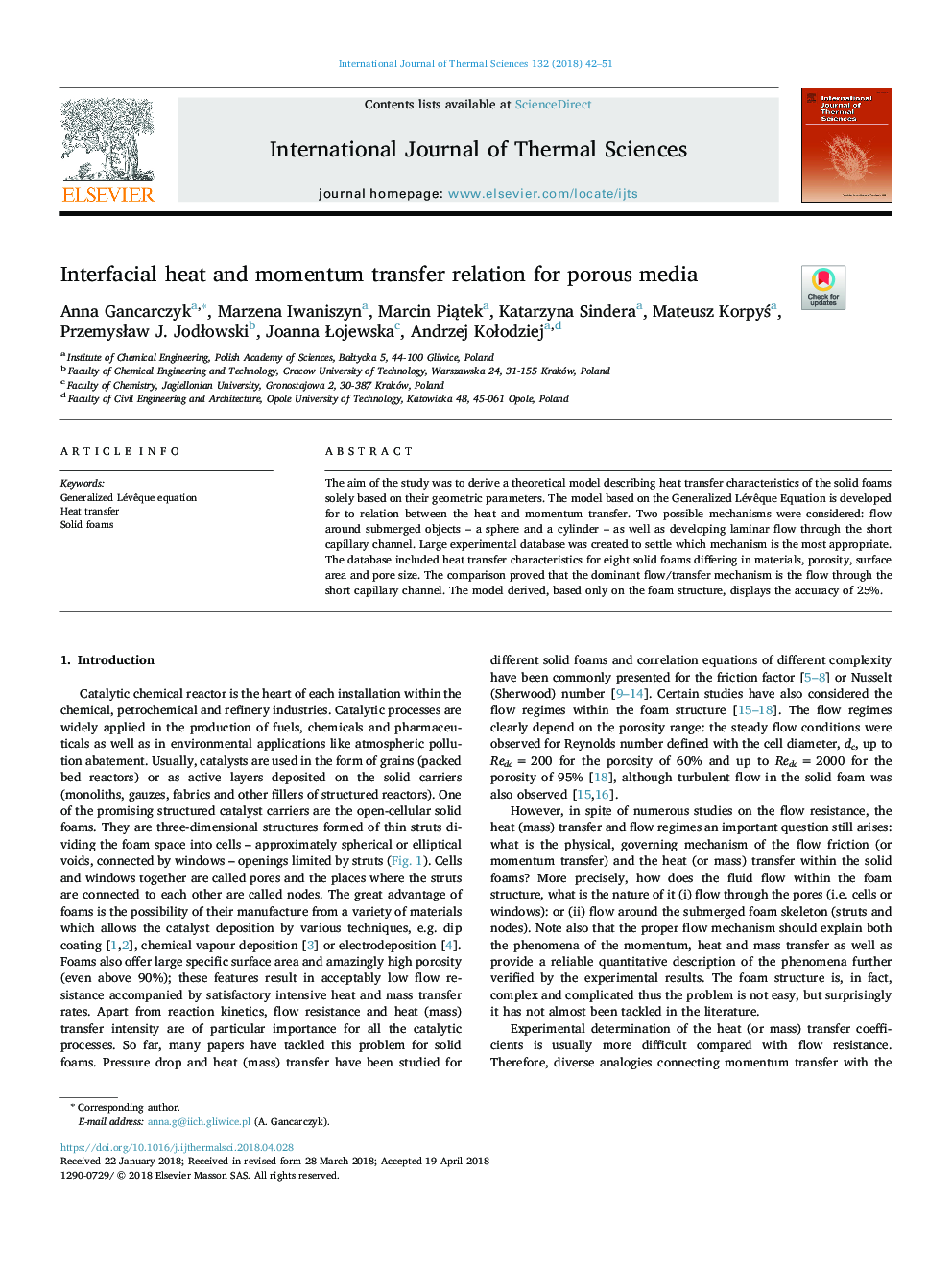| Article ID | Journal | Published Year | Pages | File Type |
|---|---|---|---|---|
| 7060558 | International Journal of Thermal Sciences | 2018 | 10 Pages |
Abstract
The aim of the study was to derive a theoretical model describing heat transfer characteristics of the solid foams solely based on their geometric parameters. The model based on the Generalized Lévêque Equation is developed for to relation between the heat and momentum transfer. Two possible mechanisms were considered: flow around submerged objects - a sphere and a cylinder - as well as developing laminar flow through the short capillary channel. Large experimental database was created to settle which mechanism is the most appropriate. The database included heat transfer characteristics for eight solid foams differing in materials, porosity, surface area and pore size. The comparison proved that the dominant flow/transfer mechanism is the flow through the short capillary channel. The model derived, based only on the foam structure, displays the accuracy of 25%.
Keywords
Related Topics
Physical Sciences and Engineering
Chemical Engineering
Fluid Flow and Transfer Processes
Authors
Anna Gancarczyk, Marzena Iwaniszyn, Marcin PiÄ
tek, Katarzyna Sindera, Mateusz KorpyÅ, PrzemysÅaw J. JodÅowski, Joanna Åojewska, Andrzej KoÅodziej,
